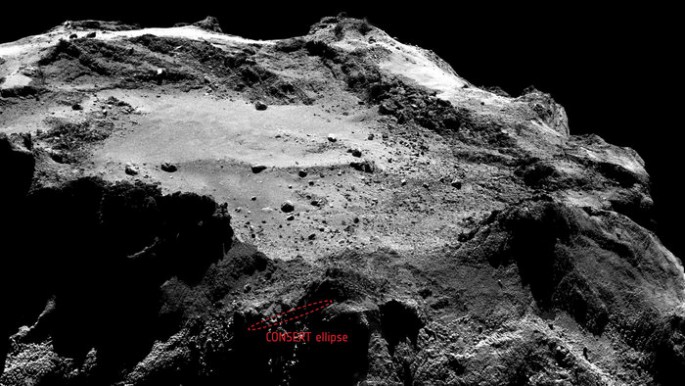The European Space Agency just released new images of Comet 67P where it can provide clues where its lost lander Philae can be found.
Late last year, Philae was the first ever lander to arrive at a surface of a comet via the Rosetta spacecraft however, the lander apparently got lost after a bumpy landing of Philae where mission control has not been able to locate its resting place since it began hibernating after its batteries ran out.
Philae is about the size of washing machine where a rough landing made it miss its landing site upon touch down on the 2.5 mile wide comet called Comet 67P/Churyumov-Gerasimenko. The team has still been unsuccessful looking for the lander.
ESA scientists have been intensively searching for the lander using Rosetta's images of the comet in hopes of finding Philae.
The latest images released by ESA from Rosetta was during its closest approaches of the comet including unprecedented views of its surface where some scientists believe that some of the features could possibly be the lost lander.
To date, there are five bright spots that have been detected in the region where Philae was supposed to end up under a deep shadow of a cliff. This shadow is believed to be hindering the lander to gather solar energy for its solar panels and the culprit for its battery drainage.
Four spots are believed to be the bouncing trajectory of Philae during its hard landing while the fifth spot makes it the possible candidate where the lander can be probably found, just a few meters from the path.
According to Phillipe Lamy of Rosetta's high-resolution OSIRIS camera team, this particular bright spot is apparently visible from two different images from December 2014 that can indicate where the lander has been, suggesting it as a real feature on the surface of the comet and not just a moving speck of dust.
Scientists are also more hopeful in finding Philae since the comet is now moving closer towards the sun. When Philae collects enough solar energy, this can turn on the lander's radio where it can send a transmission to reveal its exact location.
For now, scientists are still poring over images of the comet in the hopes that Rosetta may capture sharper images that can provide visual clues about Philae's location.



























